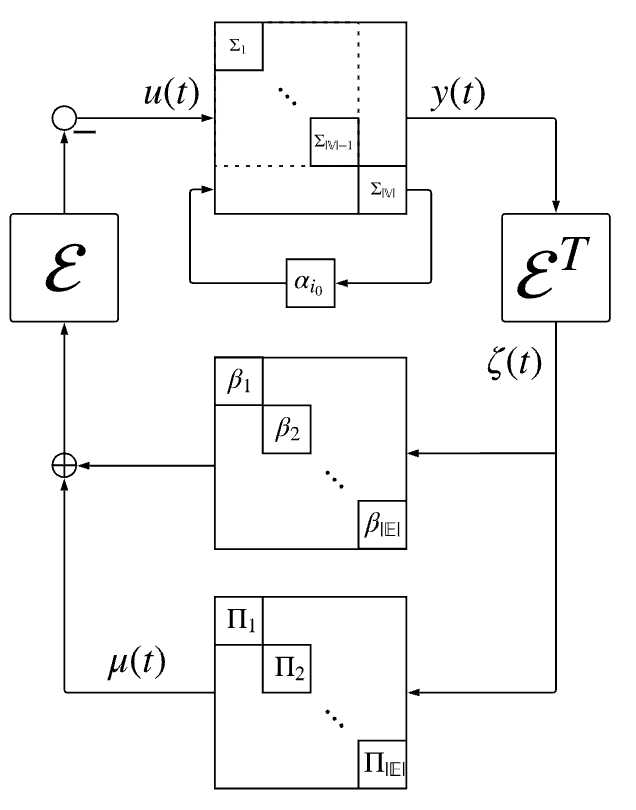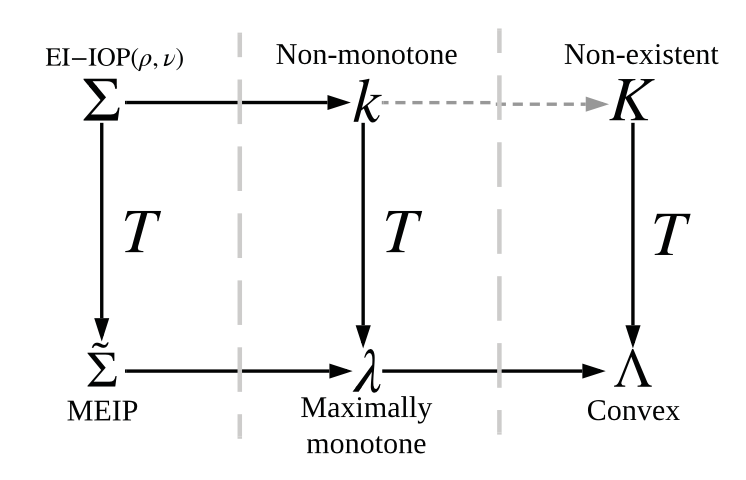Over the last few decades, many engineering systems have become much more complex, as networked systems and large-scale systems turned common, and “system-of-systems” evolved into a leading design methodology. To address the ever-growing complexity of systems, many researchers suggested various component-level tools that guarantee system-level properties. One important example of such a notion is passivity, which can be informally stated as “energy-based control.” Passivity theory has proven to be a powerful tool across many application domains, primarily due to interconnection preserving properties and connections to performance and stability analysis of nonlinear systems.
Our research focuses primarily on passivity theory as both an analysis and synthesis tool for networked systems. Our most profound result shows that diffusively coupled networked systems can be analyzed using notions from convex networked optimization theory where passivity serves as the bridge between the dynamical systems world and the optimization world. This work has led to new geometric and optimization based approaches for passivation of passivity-short systems.



Related Publications:
- F. Yue and D. Zelazo, “A Passivity Analysis for Nonlinear Consensus on Digraphs,” 2025.
- M. Sharf and D. Zelazo, “A Characterization of Passivizing Input-Output Transformations of Nonlinear MIMO Systems,” IEEE Control Systems Letters, 8:2733–2738, 2024.
- M. Sharf and D. Zelazo, “A Characterization of All Linear Passivizing Input-Output Transformations of a Passive-Short System: The SISO Case,” IEEE Control Systems Letters, 8:532–537, 2024.
- M. Sharf, A. Jain, and D. Zelazo, “Geometric Method for Passivation and Cooperative Control of Equilibrium-Independent Passive-Short Systems,” IEEE Transactions on Automatic Control, 66(12):5877–5892, 2021.
- M. Sharf, “Network Optimization Methods in Passivity-Based Cooperative Control,” phdthesis, Technion - Israel Institute of Technology, Aerospace Engineering Department, 2020.
- M. Sharf and D. Zelazo, “Analysis and Synthesis of MIMO Multi-Agent Systems Using Network Optimization,” IEEE Transactions on Automatic Control, 64(11):1558–2523, 2019.
- M. Sharf and D. Zelazo, “Symmetry-Induced Clustering in Multi-Agent Systems using Network Optimization and Passivity,” in 27th Mediterranean Conference on Control and Automation, Akko, Israel, Jul. 2019.
- M. Sharf and D. Zelazo, “Network Feedback Passivation of Passivity-Short Multi-Agent Systems,” IEEE Control Systems Letters, 3(3):607–612, 2019.
- M. Sharf and D. Zelazo, “Network Identification: A Passivity and Network Optimization Approach,” in IEEE Conference on Decision and Control, Miami, Florida, Dec. 2018.
- A. Jain, M. Sharf, and D. Zelazo, “Regularization and Feedback Passivation in Cooperative Control of Passivity-Short Systems: A Network Optimization Perspective,” IEEE Control Systems Letters, 2(4):731–736, 2018.
- M. Sharf and D. Zelazo, “A Network Optimization Approach to Cooperative Control Synthesis,” IEEE Control Systems Letters, 1(1):86–91, 2017.
- M. Bürger, D. Zelazo, and F. Allgöwer, “Duality and network theory in passivity-based cooperative control,” Automatica, 50(8):2051–2061, 2014.
- M. Bürger, D. Zelazo, and F. Allgöwer, “On the Steady-State Inverse-Optimality of Passivity-Based Cooperative Control,” in 4th IFAC Workshop on Distributed Estimation and Control in Networked System, Koblenz, Germany, Sep. 2013.
- D. Zelazo and M. Mesbahi, “Edge Agreement: Graph-Theoretic Performance Bounds and Passivity Analysis,” IEEE Transactions on Automatic Control, 56(3):544–555, 2011.




